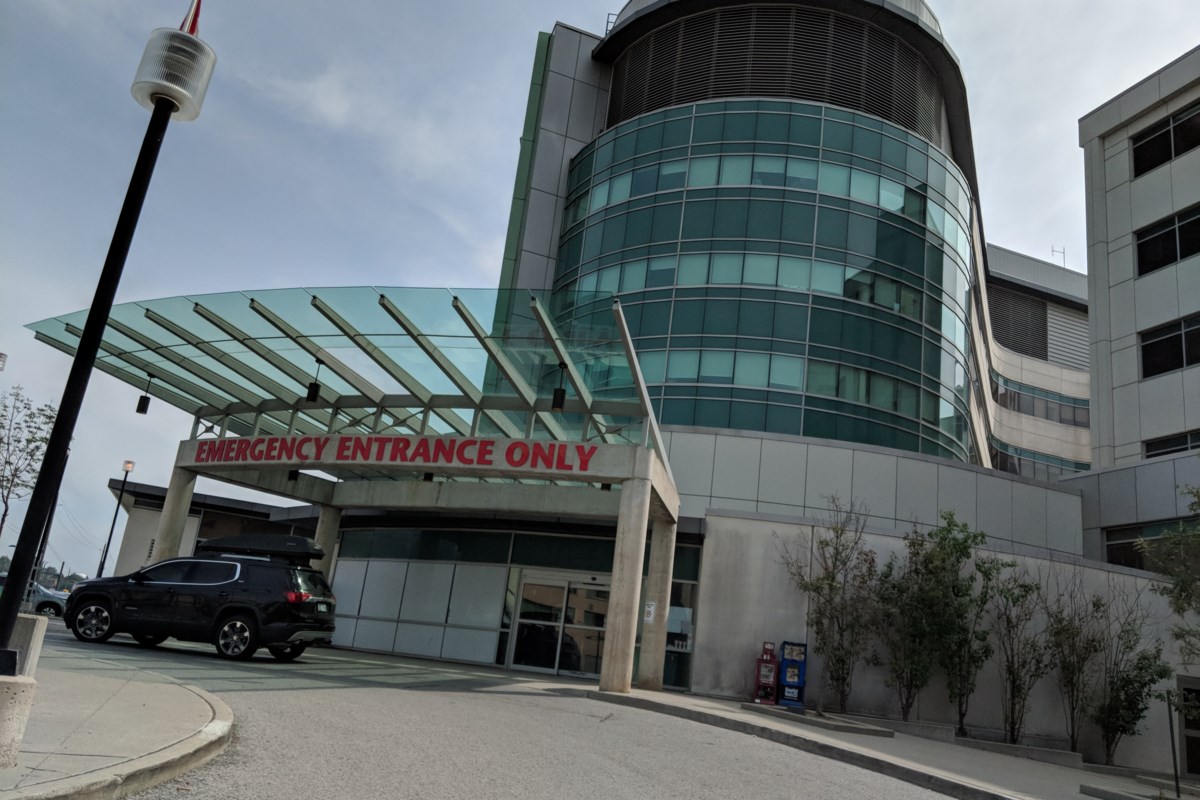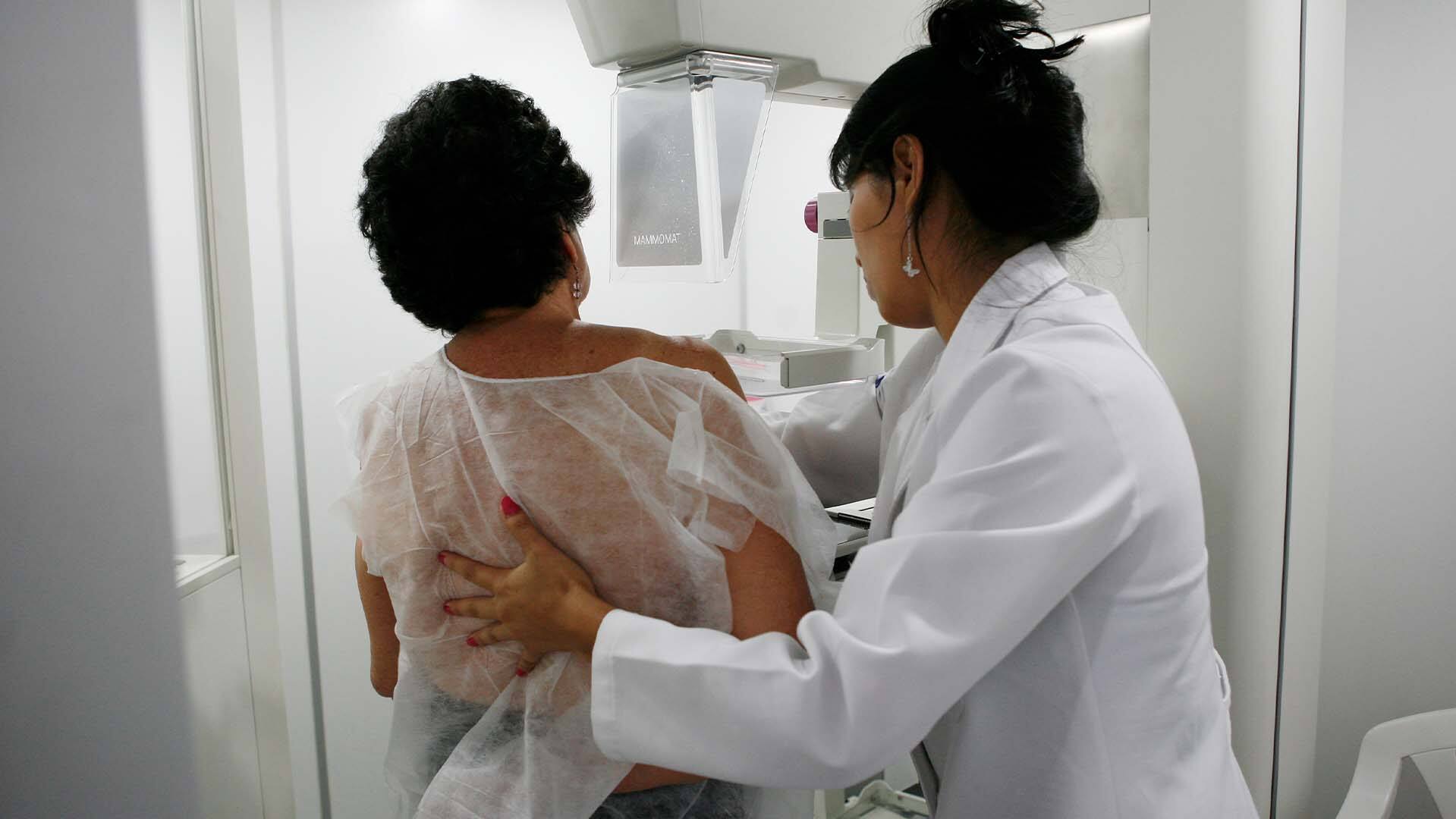Health
Hair loss can be difficult, cancer patients say — and some want better access to options

|
|
White Coat Black Art26:30Hair Loss Part I: The trouble with wigs
Cairo Gregory doesn’t think about her hair too often — anymore.
For much of her life, she says she didn’t have the “greatest” relationship with her hair. Gregory, a 16-year-old student in Toronto, had at one point straightened her hair so much, it ended up damaged. So she cut it short — “I hated it,” she said.
But eventually, as she learned to style her hair, she grew to love it. So last year, when her hair started falling out in her second week of chemotherapy for ovarian cancer, she says she found the loss difficult. Like many of those going through chemotherapy, she made the decision to completely shave her head as she started shedding.
“I think that was probably the most upsetting part for me,” she told White Coat, Black Art host Dr. Brian Goldman.
“When it fell out, it was like my entire Instagram [timeline] was just hair videos, like new hairstyles because I’d gotten really into that at that point. So it really sucked when it was like something that actually really, really became important to me at that period of time.”
Despite advances in cancer treatment, little has changed with respect to its effects on hair. Chemotherapy attacks fast-growing cells in the body — including hair. For many patients, that means losing their locks during treatment.
That can have an impact on a person’s self-confidence and how they feel about themselves during treatment. But alternatives, like wigs and cold-capping procedures that can protect a patient’s hair, are out of reach for many patients due to price and availability.
For Gregory, the problem was compounded by a lack of hospital resources and alternative hair options for people of colour, she said.
“There isn’t a pamphlet that they hand out for people with curly hair to go find wigs. There should be one,” she said.
Wigs can be pricey, but free alternatives exist
Losing hair during cancer treatment can be a shocking experience. Some patients say losing hair can make the psychological burden of chemotherapy feel heavier, given they don’t look like themselves.
“Obviously nobody wants to feel sick, but I didn’t want to look sick,” said Tammy Wegener, who was treated for breast cancer in 2022. “I wanted to feel that I had some peace of mind, that my kids had some peace of mind going through all this.”
That’s something Mona Rozdale says she hears often.
“At the end of the day, everybody wants to feel like themselves, and when you strip something that you’re so used to having, you don’t know life without it,” she said.
Rozdale is responsible for the Canadian Cancer Society’s wig and breast prosthetics bank lending program, which is free.
A U.S. medical task force is recommending routine mammogram screening for breast cancer should start at 40 not 50, especially in people in high-risk categories.
She says wigs can be a helpful solution to those facing hair loss. But they can also be pricey. On average, a good quality wig made from human hair can cost around $2,500, according to Rozdale. But cheaper synthetic wigs are starting to look more realistic.
When Gregory couldn’t find a wig that fit her style — or budget of around $500 — at a hospital boutique, she opted to have her mother’s hairdresser make her one at a discount.
Scalp cooling is resource-intensive
Some people being treated for cancer have kept their natural hair with a process known as scalp cooling or cold capping.
Patients wear an intensely cold helmet before, during and after chemotherapy that constricts blood vessels in the scalp. It involves chilled caps that are swapped out regularly, or a machine that pumps cold liquid through an attached cap. In doing so, chemotherapy is less likely to reach and damage hair follicles, potentially reducing hair loss.


With limited data on its efficacy and a high price tag, however, cold capping is not widely available across Canada.
“The greatest limitation is chair time. It is a resource-rich type of use of the machine,” said Dr. Shannon Salvador, gynecologic oncologist at the Jewish General Hospital in Montreal and an associate professor at McGill University.
“When you have a patient who has to come for chemo every single week, that’s a great deal of time for them and a lot of time in the hospital to be able to come and use the machine.”
But Salvador, who has studied the effectiveness of scalp cooling, says there is evidence it does work for some patients.
In a 2021 study she co-authored, published in the journal Gynecologic Oncology Reports, over half of patients who were on a smaller weekly dose of a chemotherapy drug retained about 50 per cent of their hair when using a cold cap. The cold cap treatment didn’t work for those on a larger dose.
Cold caps limited at Canadian hospitals
Cold capping is not available to people with certain types of cancer, such as blood cancers, and those being treated with certain types of chemotherapy.
White Coat, Black Art reached out to several cancer centres in Canada, and found scalp cooling offered at just a handful of hospitals, often at the patient’s expense.
Wegener, 49, was able to access the treatment for free at Saint John Regional Hospital after a scalp cooling machine was donated by a nurse at the institution.
Salvador says she expects hospitals will still rely on donations and external support for scalp cooling technology, rather than funding them directly.
“We need to acknowledge that, in Canada, we are in a socialized health-care system where we need to place the money where it’s going to do the most benefit,” she said.
“Unfortunately that does mean turning away things that are of great emotional benefit to patients, but may not play a great deal in their actual clinical care.”


Cold capping was a success for Wegener, who says during her chemotherapy treatment she noticed only some thinning of her hair and eyebrows. Based on her own experience, she hopes to see it in more places.
“Not that it’s for everybody and not everybody sees the results I saw with mine,” Wegener said. “But I think it still should be an option for everyone.”
Growing back
Gregory, the Toronto student who is still anxious about her cancer potentially returning, has become more comfortable with — and without — her wig.
She went to class bald for the first three months of the school year, in part because she also lost hair on and around her face, making the wig look unnatural. But she has since confidently worn wigs to school, and now has enough of her natural hair to add in braids.
“That took a year. It’s almost been a year since my hair started going back,” she said.
“I think by next summer I could probably wear a ponytail wig and then hopefully, like maybe a few summers after that, I won’t wear wigs anymore at all.”





Health
New technology to advance women’s cancer care at Southlake


|
|
NEWS RELEASE
SOUTHLAKE REGIONAL HEALTH CENTRE
**************************
This Cancer Awareness Month, Southlake is adding advanced technologies to detect and treat breast cancer and other women’s cancers thanks to generous community donor support, most recently through the HERE is Where Cancer Meets its Match campaign. New cancer care technology, including new mammography machines, the MyoSure System and the MOLLI 2® System will make a measurable impact in diagnosing and treating women’s cancers in the communities Southlake serves.
Southlake is installing three new mammography machines to expand its breast cancer screening program to 1,500 more women each year. Two of these machines have new biopsy capabilities that will reduce the number of cancelled exams due to equipment failure, ensuring timely care for women. Women ages 40 to 49 years old will be able to self-refer for publicly funded mammograms through the Ontario Breast Screening Program starting this fall.
“Early detection is critical when treating breast cancer and other women’s cancers,” said Lorrie Reynolds, Director, Regional Cancer Program at Southlake. “We treat more than 1,700 breast cancer patients at Southlake every year. By adding advanced technology, like the new mammography machines, we’re ensuring women have the best experience at Southlake.”
Southlake is also introducing the MyoSure System, an innovative technology that can help detect female reproductive cancers. Damaged tissue in a woman’s uterus such as fibroids and polyps can now be removed in a precise, minimally invasive procedure that leaves the rest of the uterus intact. This will improve the overall patient experience by supporting faster recovery, reducing the risk of infection and giving more women the option to have children. An estimated 200 women per year will benefit from the MyoSure System.
The new mammography machines and the MyoSure System build on Southlake’s recent investment in the MOLLI 2® System, a made-in-Canada wire-free breast localization technology. This technology is considerably less invasive and more accurate when compared to wire-guided localization, resulting in a better patient experience and improved cosmetic outcomes. More than 200 women each year will benefit from this innovative medical device as they are treated for breast cancer at Southlake.
“As a clinician caring for women with cancer in our community, I’m incredibly proud of the work Southlake is doing to advance women’s health and improve patient experiences,” said Sara Temple, MD, Surgical Oncologist and Chief of Surgery at Southlake. “Women who visit Southlake can be confident that they are receiving leading edge care, close to home when they need it most.”
The World Health Organization anticipates a 77 per cent increase in cancer diagnoses by 2050. Southlake serves some of the fastest growing communities in Canada and anticipates that the number of patients requiring cancer care will grow. By investing in new technology, Southlake is ensuring that women in the communities it serves have access to leading edge cancer care. All of these investments were funded with support from community donors who generously gave to Southlake to support investments into women’s health at the hospital.
“The generosity of our donor community and the impact they have made for women receiving cancer diagnosis and treatment at Southlake is something we can all take great pride in,” said Jennifer Ritter, President and CEO of Southlake Foundation. “From our Women’s Health Initiative donors supporting new mammography machines, to the Ladies in Philanthropy for Southlake funding the MOLLI 2 System, to our long-standing partners The Edge Benefits and Pheasant Run Golf Club enabling the introduction of MyoSure System through their joint annual charity golf tournament, we are incredibly lucky to share a vision of access to exceptional care for everyone who depends on Southlake when they need us most. Thank you, to every donor who contributed to these important upgrades to care for women.”
Southlake Foundation’s HERE is Where Cancer Meets its Match campaign supports the Stronach Regional Cancer Centre at Southlake. For more information or to make a donation, visit: southlake.ca/HERE.





Health
Pasteurized milk includes remnants of H5N1 bird flu, U.S. officials say


|
|
The U.S. Food and Drug Administration says that samples of pasteurized milk have tested positive for remnants of the bird flu virus that has infected dairy cows.
The agency stressed that the material is inactivated and that the findings “do not represent actual virus that may be a risk to consumers.” Officials added that they’re continuing to study the issue.
“To date, we have seen nothing that would change our assessment that the commercial milk supply is safe,” the FDA said in a statement on Tuesday.
The announcement comes nearly a month after an avian influenza virus that has sickened millions of wild and commercial birds in recent years was detected in dairy cows in at least eight states. The Agriculture Department (USDA) says 33 herds have been affected to date.
FDA officials didn’t indicate how many samples they tested or where they were obtained. The agency has been evaluating milk during processing and from grocery stores, officials said. Results of additional tests are expected in “the next few days to weeks.”
WATCH | Bird flu spread in U.S. cows:
For the first time ever, avian influenza, or H5N1 bird flu, was detected in roughly a dozen dairy cow herds across the U.S. About That producer Lauren Bird explores why scientists and public health officials are concerned about the cross-species transmission and whether humans are now at higher risk.
The polymerase chain reaction (PCR) lab test the FDA used would have detected viral genetic material even after live virus was killed by pasteurization, or heat treatment, said Lee-Ann Jaykus, an emeritus food microbiologist and virologist at North Carolina State University
“There is no evidence to date that this is infectious virus, and the FDA is following up on that,” Jaykus said.
Officials with the FDA and the USDA had previously said milk from affected cattle did not enter the commercial supply. Milk from sick animals is supposed to be diverted and destroyed. Federal regulations require milk that enters interstate commerce to be pasteurized.
Tests for viable virus underway, agency says
Because the detection of the bird flu virus known as Type A H5N1 in dairy cattle is new and the situation is evolving, no studies on the effects of pasteurization on the virus have been completed, FDA officials said. But past research shows that pasteurization is “very likely” to inactivate heat-sensitive viruses like H5N1, the agency added.
The agency said it has been evaluating milk from affected animals, in the processing system and on the shelves. It said it is completing a large, representative national sample to understand the extent of the findings.
Matt Herrick, a spokesperson for the International Dairy Foods Association, said that time and temperature regulations for pasteurization ensure that the commercial U.S. milk supply is safe. Remnants of the virus “have zero impact on human health,” he wrote in an email.
Scientists confirmed the H5N1 virus in dairy cows in March after weeks of reports that cows in Texas were suffering from a mysterious malady. The cows were lethargic and saw a dramatic reduction in milk production. Although the H5N1 virus is lethal to commercial poultry, most infected cattle seem to recover within two weeks, experts said.
To date, two people in the U.S. have been infected with bird flu. A Texas dairy worker who was in close contact with an infected cow recently developed a mild eye infection and has recovered. In 2022, a prison inmate in a work program caught it while killing infected birds at a Colorado poultry farm. His only symptom was fatigue, and he recovered.





Health
Remnants of bird flu virus found in pasteurized milk, FDA says


|
|
The U.S. Food and Drug Administration said Tuesday that samples of pasteurized milk had tested positive for remnants of the bird flu virus that has infected dairy cows.
The agency stressed that the material is inactivated and that the findings “do not represent actual virus that may be a risk to consumers.” Officials added that they’re continuing to study the issue.





-



 Health19 hours ago
Health19 hours agoRemnants of bird flu virus found in pasteurized milk, FDA says
-



 Health23 hours ago
Health23 hours agoBird flu virus found in grocery milk as officials say supply still safe
-
News15 hours ago
Amid concerns over ‘collateral damage’ Trudeau, Freeland defend capital gains tax change
-
Art19 hours ago
Random: We’re In Awe of Metaphor: ReFantazio’s Box Art
-



 Investment23 hours ago
Investment23 hours agoTaxes should not wag the tail of the investment dog, but that’s what Trudeau wants
-
News23 hours ago
Peel police chief met Sri Lankan officer a court says ‘participated’ in torture – Global News
-
Art12 hours ago
The unmissable events taking place during London’s Digital Art Week
-
Media18 hours ago
Vaughn Palmer: B.C. premier gives social media giants another chance






